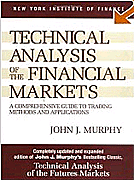Mineweb: World's hottest uranium stocks
Author: Barry Sergeant
Posted: Tuesday , 27 Mar 2007
JOHANNESBURG -
Prices for uranium (uranium oxide, U3O8, to be exact) have soared in the past few years as record crude oil prices have forced public and private sectors to announce rafts of nuclear reactors as a cost-effective energy alternative. Long-established uranium producers have benefited enormously; the market capitalization of the No 1 producer, Cameco, is close to US$14bn.
Uranium prices have grown ten fold in just five years. Between the early 1990s and 2004, uranium markets were in a supply/demand deficit, balanced by inventories held by nuclear generators and traders. Prices started turning in 2001, from between $5 and $10/pound, to current quotes around the $80/pound mark. Over the past five years, Cameco's NYSE stock price has increased from less than $3 a share to more that $45, with current quotes around $40.25.
The global uranium rush has triggered an explosion in exploration, along with entrepreneurs dusting off dormant projects, and rushing to the market. This raises serious questions of potential risk for equity investors, confronted by a plethora of choices.
In a major new report, RBC Capital Markets (RBCCM) notes that "many uranium exploration and development projects are being advanced by numerous companies", and finds it "inevitable that some of these companies will successfully bring their projects into production in the coming years - something the market will need in the future to bridge the supply/demand gap that we expect to exist after 2013".
There are many ways of valuing mining companies, and uranium has been out of fashion for so long that a number of additional risks may require consideration. In an examination of 21 listed uranium stocks, RBCCM has chosen from several different valuation methodologies, depending on the company. For uranium companies with existing operations, a forward EPS (earnings per share) or CFPS (cash flow per share) multiple is applied, reflecting valuation relative to peers and the market cycle.
For companies developing new projects, RBCCM often applies a net asset value (NAV) approach, sometimes coupled with a forward EPS multiple. For exploration companies where it is too early to calculate an NAV, RBCCM looks to the enterprise value (EV) per pound of U3O8 in resource. While the EV/pound metric is "easy" to calculate, RBCCM cautions that it should not be used in isolation.
Cameco is, of course, the world's No 1 producer of uranium oxide. Its principal interests comprise Canada's McArthur River and the flood-affected Cigar Lake, Inkai in Kazakhstan, and the US's Crow Butte and Smith Ranch/Highland operations. Rio Tinto, one of the world's biggest diversified resources entities (along with BHP Billiton and Anglo American) rates as No 2 world producer of uranium oxide, thanks to its stake in Energy Resources of Australia (ERA), and its 69% interest in the Rossing mine in Namibia.
France-based Areva is No 3, and like Cameco, has interests in Canada's McArthur River and Cigar Lake. KazAtomProm rates as No 4 producer, thanks to its interest, like Cameco, in Inkai. BHP Billiton is next on the list, followed by TVEL (Russia), Navoi (Uzbekistan), Vostgok (Ukraine), Nufcor (South Africa) and CNNC (China). There are also lesser-known producers of uranium oxide, such as AngloGold Ashanti, as a by-product from its gold mines in the Vaal River district in South Africa.
These big names among uranium producers present at least two problems for the investor: many are not listed, and where listed, uranium income, while substantial, may not be material to the stock as a whole. BHP Billiton, the world's biggest diversified resources stock, is a prime example. Its huge Olympic Dam operation in Australia, run primarily as a copper producer, owns by far the biggest uranium oxide reserves in the world. Its uranium income is, however, substantially "diluted" by income from a number of other divisions.
As such, 21 listed stocks with exposure to uranium may be considered as investable. There are six with a market capitalisation of $2bn or more: Cameco, ERA, Paladin Resources, UrAsia, Denison Mines, and sxr Uranium One. Following in terms of market capitalisaton are UraMin, First Uranium, Aurora, Energy Metals, Mega Uranium, Laramide Resources, Forsys Metals Corporation, Ur-Energy, Tournigan Gold, Strathmore Minerals, Khan Resources, Western Prospector, OmegaCorp, Berkeley Resources, and Uranium Power Corporation. sxr Uranium One is currently involved in potential corporate action with UrAsia.
RBCCM rates just five of these stocks, starting with Cameco, as "top pick, above average risk". Risks that are seen as applying to ERA can be seen as equally important for all other uranium stocks: fluctuations in the uranium price, currency, and project capex (capital expenditure) and opex (energy, material and manpower costs).
First Uranium is notable for its absence of "prior corporate history", along with "no meaningful comparisons in the market and no meaningful short-term cash flow". Paladin Resources faces notable hurdles at its Langer Heinrich and Kayelekera operations, while sxr Uranium One will be carefully studied for its ability to bring Dominion and Honeymoon into production on time and on budget.
Back on the fundamentals, RBCCM believes that uranium oxide prices are in the "middle" of a "bull market", with 2007 forecast prices expected to exceed $100/pound.
There is a cautionary note, in that prices could move beyond that threshold.
Posted: Tuesday , 27 Mar 2007
JOHANNESBURG -
Prices for uranium (uranium oxide, U3O8, to be exact) have soared in the past few years as record crude oil prices have forced public and private sectors to announce rafts of nuclear reactors as a cost-effective energy alternative. Long-established uranium producers have benefited enormously; the market capitalization of the No 1 producer, Cameco, is close to US$14bn.
Uranium prices have grown ten fold in just five years. Between the early 1990s and 2004, uranium markets were in a supply/demand deficit, balanced by inventories held by nuclear generators and traders. Prices started turning in 2001, from between $5 and $10/pound, to current quotes around the $80/pound mark. Over the past five years, Cameco's NYSE stock price has increased from less than $3 a share to more that $45, with current quotes around $40.25.
The global uranium rush has triggered an explosion in exploration, along with entrepreneurs dusting off dormant projects, and rushing to the market. This raises serious questions of potential risk for equity investors, confronted by a plethora of choices.
In a major new report, RBC Capital Markets (RBCCM) notes that "many uranium exploration and development projects are being advanced by numerous companies", and finds it "inevitable that some of these companies will successfully bring their projects into production in the coming years - something the market will need in the future to bridge the supply/demand gap that we expect to exist after 2013".
There are many ways of valuing mining companies, and uranium has been out of fashion for so long that a number of additional risks may require consideration. In an examination of 21 listed uranium stocks, RBCCM has chosen from several different valuation methodologies, depending on the company. For uranium companies with existing operations, a forward EPS (earnings per share) or CFPS (cash flow per share) multiple is applied, reflecting valuation relative to peers and the market cycle.
For companies developing new projects, RBCCM often applies a net asset value (NAV) approach, sometimes coupled with a forward EPS multiple. For exploration companies where it is too early to calculate an NAV, RBCCM looks to the enterprise value (EV) per pound of U3O8 in resource. While the EV/pound metric is "easy" to calculate, RBCCM cautions that it should not be used in isolation.
Cameco is, of course, the world's No 1 producer of uranium oxide. Its principal interests comprise Canada's McArthur River and the flood-affected Cigar Lake, Inkai in Kazakhstan, and the US's Crow Butte and Smith Ranch/Highland operations. Rio Tinto, one of the world's biggest diversified resources entities (along with BHP Billiton and Anglo American) rates as No 2 world producer of uranium oxide, thanks to its stake in Energy Resources of Australia (ERA), and its 69% interest in the Rossing mine in Namibia.
France-based Areva is No 3, and like Cameco, has interests in Canada's McArthur River and Cigar Lake. KazAtomProm rates as No 4 producer, thanks to its interest, like Cameco, in Inkai. BHP Billiton is next on the list, followed by TVEL (Russia), Navoi (Uzbekistan), Vostgok (Ukraine), Nufcor (South Africa) and CNNC (China). There are also lesser-known producers of uranium oxide, such as AngloGold Ashanti, as a by-product from its gold mines in the Vaal River district in South Africa.
These big names among uranium producers present at least two problems for the investor: many are not listed, and where listed, uranium income, while substantial, may not be material to the stock as a whole. BHP Billiton, the world's biggest diversified resources stock, is a prime example. Its huge Olympic Dam operation in Australia, run primarily as a copper producer, owns by far the biggest uranium oxide reserves in the world. Its uranium income is, however, substantially "diluted" by income from a number of other divisions.
As such, 21 listed stocks with exposure to uranium may be considered as investable. There are six with a market capitalisation of $2bn or more: Cameco, ERA, Paladin Resources, UrAsia, Denison Mines, and sxr Uranium One. Following in terms of market capitalisaton are UraMin, First Uranium, Aurora, Energy Metals, Mega Uranium, Laramide Resources, Forsys Metals Corporation, Ur-Energy, Tournigan Gold, Strathmore Minerals, Khan Resources, Western Prospector, OmegaCorp, Berkeley Resources, and Uranium Power Corporation. sxr Uranium One is currently involved in potential corporate action with UrAsia.
RBCCM rates just five of these stocks, starting with Cameco, as "top pick, above average risk". Risks that are seen as applying to ERA can be seen as equally important for all other uranium stocks: fluctuations in the uranium price, currency, and project capex (capital expenditure) and opex (energy, material and manpower costs).
First Uranium is notable for its absence of "prior corporate history", along with "no meaningful comparisons in the market and no meaningful short-term cash flow". Paladin Resources faces notable hurdles at its Langer Heinrich and Kayelekera operations, while sxr Uranium One will be carefully studied for its ability to bring Dominion and Honeymoon into production on time and on budget.
Back on the fundamentals, RBCCM believes that uranium oxide prices are in the "middle" of a "bull market", with 2007 forecast prices expected to exceed $100/pound.
There is a cautionary note, in that prices could move beyond that threshold.















![[Most Recent Quotes from www.kitco.com] [Most Recent Quotes from www.kitco.com]](http://www.kitco.com/images/live/t24_au_en_usoz_6.gif)
![[Most Recent Quotes from www.kitco.com] [Most Recent Quotes from www.kitco.com]](http://www.kitco.com/images/live/au_go_0030_ny.gif)
![[Most Recent Quotes from www.kitco.com] [Most Recent Quotes from www.kitco.com]](http://www.kitco.com/images/live/au_go_0365_ny.gif)
![[Most Recent Quotes from www.kitco.com] [Most Recent Quotes from www.kitco.com]](http://kitconet.com/charts/metals/silver/t24_ag_en_usoz_4.gif)

















0 ΣΧΟΛΙΑ (COMMENTS):
Post a Comment
<< Home